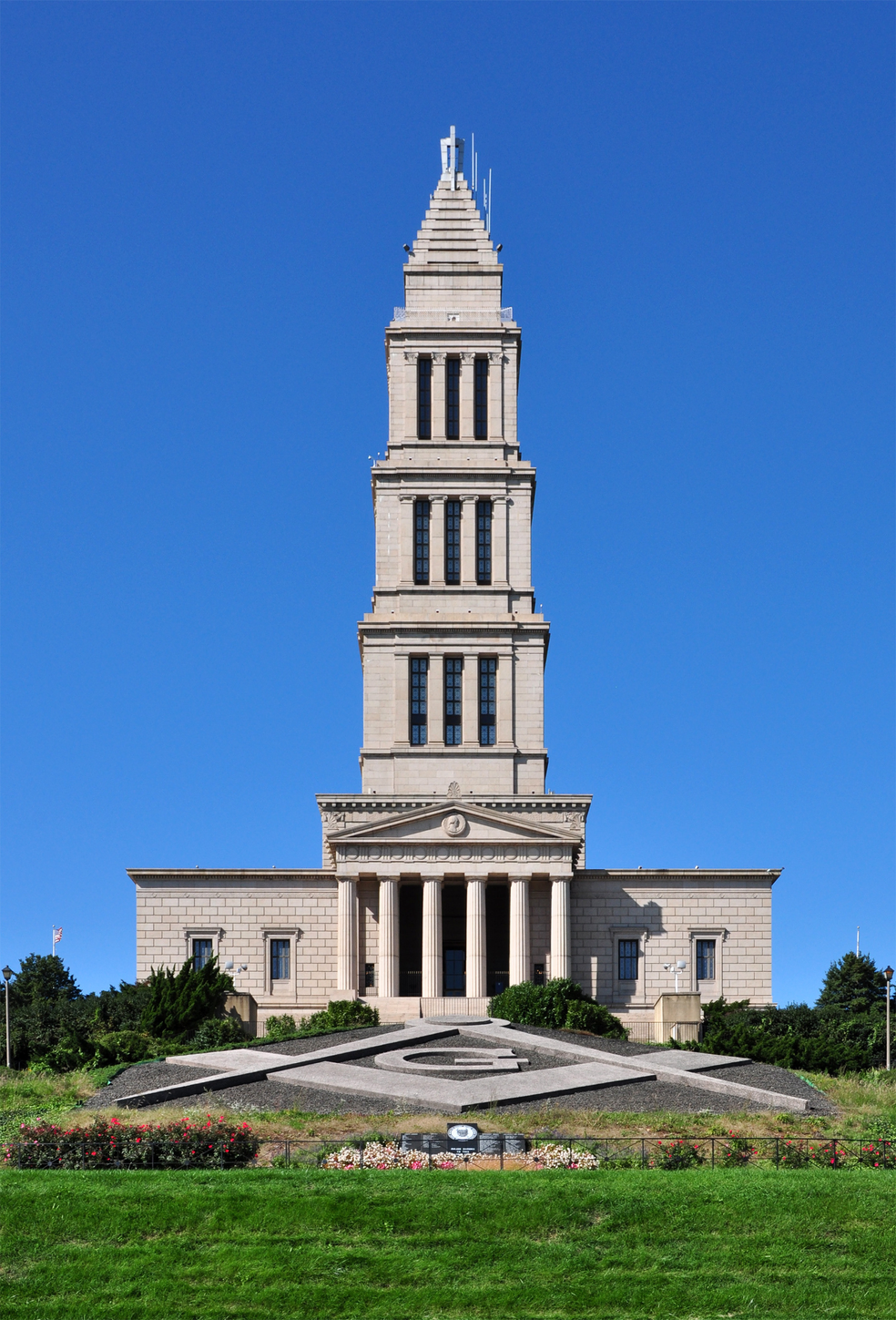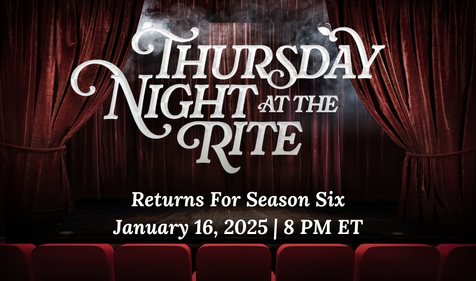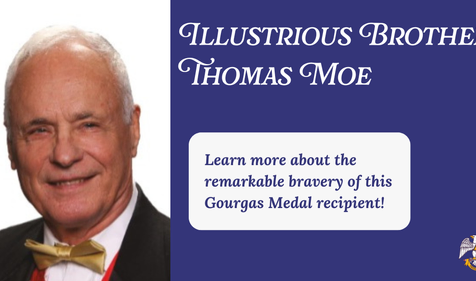A few weeks ago, The George Washington Masonic National Memorial hosted the conference and symposium, ‘Freemasons in the Transatlantic World’ organized by Quatuor Coronati Lodge. Hilary Anderson Stelling, Director of Collections and Exhibitions at the Scottish Rite Masonic Museum & Library, had the opportunity to present at the conference along with colleague, Jeff Croteau, Director of the Van Gorden-Williams Library and Archives. Oscar Alleyne, 32°, one of the creators of the Hauts Grades Academy, our premiere educational program, also presented.
From September 14 – 16, 2018, The George Washington Masonic National Memorial hosted the conference and symposium, “Freemasons in the Transatlantic World,” organized by Quatuor Coronati Lodge. Attendees enjoyed presentations by world-class speakers and top line Masonic researchers, participated in a debate on the formation of the first Grand Lodge, witnessed a demonstration ‘Universal Lodge’ meeting, and toured the Memorial.
Hilary Anderson Stelling, Director of Collections and Exhibitions at the Scottish Rite Masonic Museum & Library in Lexington, Massachusetts, attended the conference and presented a paper. Colleague Jeff Croteau, Director of the Van Gorden-Williams Library & Archives at the Museum, also presented, as did Oscar Alleyne, 32°. Brother Alleyne is one of the curriculum designers of the Hauts Grades Academy, our premiere educational offering. We will feature both in upcoming blogs.
Below is the abstract from Stelling’s paper on Partnerships and the Business of American Masonic Certificates, 1800-1830.
Hilary told us that she had a rewarding and enjoyable time and that she values the opportunity to connect with colleagues from all over the U. S. and the world. For Museum staff members like her, conferences like this one are an effective way to hear about current scholarship, and to let researchers know about resources that are available at the Museum and Library. Please enjoy the abstract from her work below and let us know what you think in the comments!
Partnerships and the Business of American Masonic Certificates, 1800-1830,
Hilary Anderson Stelling, Director of Exhibitions and Collections, Scottish Rite Masonic Museum & Library.
In 1832, Sydney Hayden (1813-1890), a new Master Mason at Rural Amity Lodge, No. 70 in Athens, Pennsylvania, received a certificate signed by lodge officers and bearing the lodge’s seal (fig. 1). Hayden’s document had been engraved almost twenty years before by Charles Cushing Wright (1796-1854) when Wright had been a young silversmith’s apprentice in Homer, New York. Wright’s engraved certificate had been first offered for sale by William B. Whitney. Whitney, a member of Homer Lodge No.137, contracted Wright to undertake engraving the certificate.1 Many American engraved certificates produced in the early 1800s were the result of arrangements forged between craftsmen and entrepreneurs. These artisans and businessmen, filling the various roles of engraver, designer, printer and distributor, collaborated to produce and sell certificates to the growing Masonic market of the time.
These collaborations ranged from long-established partnerships like that of Masons and engravers William B. Annin (1791-1839) and George Girdler Smith (1795-1878) of Boston, Massachusetts, who sold certificates in New England, to collaborations between competitors such as artist John Reubens Smith (1775-1849), engraver Peter Maverick (1780-1831), and engraver/publisher Samuel Maverick (1789-1845), all of New York City. The three men produced a certificate used by several New York City lodges in the 1820s. Other intriguing collaborations included partners who worked at some distance from each other, like engraver Amos Doolittle (1754-1832), New Haven, Connecticut, and publisher Henry Parmele (d. 1821) of Philadelphia. Some of these artists modeled their certificates on English examples using similar compositions and symbols; others designed entirely new creations.
Some collaborations, like the one between Wright and Whitney, have been discussed in recent scholarship treating allied work, such as engraved Masonic aprons.2 However, though often noted in library and museum cataloging, engravers and publishers' collaborations on engraved Masonic certificates have not been explored in depth. Drawing on the collections of the Scottish Rite Masonic Museum & Library and the Grand Lodge of Massachusetts, this paper will examine some of the varied business relationships between the craftsmen and the entrepreneurs who produced American Masonic certificates in the early 1800s. It seeks to shed light on the collaborations entered into by engravers and entrepreneurs serving the Masonic market and ascertain if they differed from the other kinds of partnerships engravers pursued at the time.
1 For more on this certificate and Wright and Whitney’s business relationship, see John Hamilton, Material Culture of the American Freemasons (Lexington, Massachusetts: Museum of Our National Heritage, 1994) 176. Wright and Whitney’s collaboration on apron designs is discussed in Aimee E. Newell, The Badge of a Freemason: Masonic Aprons from the Scottish Rite Masonic Museum & Library (Lexington, Massachusetts: Scottish Rite Masonic Museum & Library, 2015) 102-103.
2 See Newell, The Badge of a Freemason.
Hilary Anderson Stelling, Director of Collections and Exhibitions, Scottish Rite Masonic Museum & Library, Lexington, Massachusetts, [email protected].
Figure 1.
Hilary Anderson Stelling is the Director of Collections and Exhibitions at the Scottish Rite Masonic Museum and Library in Lexington, Massachusetts. At the Museum since 2000, she has curated exhibitions on topics ranging from Masonic decorative arts and neon signs to colonial history and contemporary photography. Stelling contributed to the Museum’s award-winning publication, Curiosities of the Craft: Treasures from the Grand Lodge of Massachusetts Collection. She is a graduate of the University of California, Berkeley, and the Winterthur Program in Early American Culture and holds a certificate in genealogical research from Boston University.
Related Stories
Discover additional Scottish Rite blogs and news on this topic.
-
Here’s What’s New with Thursday Night at the Rite Season Six
Degrees
Read More about Here’s What’s New with Thursday Night at the Rite Season Six
-
Illustrious Brother Thomas N. Moe Awarded the Gourgas Medal for Exemplary Service to Freemasonry and Humanity
News
Read More about Illustrious Brother Thomas N. Moe Awarded the Gourgas Medal for Exemplary Service to Freemasonry and Humanity
-
4 Things to Know About Millennials & Freemasonry
News
Read More about 4 Things to Know About Millennials & Freemasonry



